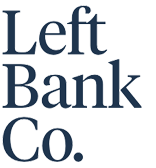Beyond Placemaking: place models for public benefit
Image: The Culture Mile, London
“At Left Bank Co., we believe the concept of placemaking as an act of curation of public space needs a fundamental rethink, and now is the time to do just that.”
We all seek meaning from the places in which we live, work and travel. We immerse ourselves in cities and regions, looking for a sense of belonging and for values upon which to build our identity, to meet likeminded people, and to express and experience culture. And it is the public and shared spaces of our cities and towns where much of this meaning is found. From the streets, parks and playgrounds, to our libraries, museums and community centres, and even our bars, cafes, schools and gyms, it is human nature to find places where we can connect with others, and in doing so, connect with ourselves.
Even as we continue to grapple with the impacts of COVID, we are already looking for solutions to reconnect our communities and bring life back to public places. Open space has become invaluable, an environment in which we can meet others in relative comfort and safety. Placemaking initiatives to make public spaces more attractive and enjoyable are undergoing a boom, from pedestrian friendly streets to activation and beautification projects that turn open spaces into place where people will dwell.
At Left Bank Co., we believe the concept of placemaking as an act of curation of public space needs a fundamental rethink, and now is the time to do just that. While activation programs, temporary projects and pop-up installations have their role to play, they are also reliant on expiring budgets and capped resources, and can also become triggers for gentrification. They are quick fixes, satisfying demand for immediacy, and when the funding runs out, these placemaking activations disappear, and our public spaces once again become quiet and still. Creative communities are also susceptible to activation, used to deliver activation, and then moved on once a more financially lucrative offer comes along. Placemaking does not support global efforts to create more sustainable or resilient cities.
In our work, we are shifting the conversation away from placemaking to public benefit, with a focus on long-term, resilient and sustainable approaches to urban activation and public life. Public benefit has been a key component of the NSW Government’s fast-tracked approvals program, and is also an important component of planning frameworks in most cities. In order to guarantee the continued attractiveness, vibrancy and animation of our public realm, we need to embed the business and organisations that organically generate public benefit and activation into the urban fabric. This relies on the underlying property models that enable a variety of players to contribute to the social and cultural experience of a place sustainably over the long-term, free from market pressures or political cycles. Through alternative place models that establish different levels of property ownership, long-term secure leasing or shared investment, we can support the natural place activators to do what they do best: creating the spaces, places and activities for the community to come together and generate shared meaning.
There are several properties and precinct across Sydney that could create immense placemaking value for the community and their owners, if they were to be developed using an innovative and resilient public benefit approach. They all share the common feature of being heritage sites, where the urban fabric, and often the use, must be preserved. Yet contemporary uses and expectations of commercial returns make them challenging projects to stack up.
There are calls for the City of Sydney to take ownership of Potts Point’s Metro Minerva and return it to the city as a performance venue, yet the City does not have the funds or resources to take on this responsibility. The Rocks is struggling to survive, looking to superficial activation ideas to stimulate foot traffic to the historic precinct. And Sydney’s Kirkbride precinct at Callan Park is currently on the search for potential tenants to meet its requirements as either a health, education or arts precinct, yet the size and investment required to rejuvenate and manage this enormous site would be beyond many organisations or businesses.
These projects could be made possible through public benefit approaches based on innovative partnerships or governance structures, but these place models require us to think beyond the known property and investment constructs. The first step in this direction is for city-making leaders at the highest level across both the private and the public sector to recognise the social and cultural capital that can be generated when the private, public and not-for-profit sector work in partnership to generate better public outcomes.
We welcome you to come on this journey with us as we move away from the quick fix of placemaking and towards the more sustainable approach of place models for public benefit.

